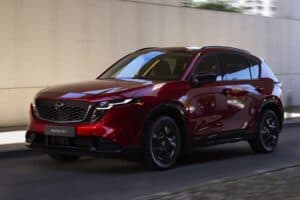What are the biggest causes behind traffic jams and is there any way to avoid them?

Many of us have found ourselves caught in what feels like the mother of all traffic jams. But what are the biggest causes behind traffic jams and is there any way to avoid them?
TomTom’s most recent Traffic Index , based on 2016 data, ranks Johannesburg and Cape Town at number 70 and 48 respectively on its most traffic congested cities list – one that comprises 390 cities across 48 countries.
Johannesburg, Pretoria, Bloemfontein, Durban, East London and Cape Town have all seen increases in congestion of between 2% and 5% when compared to the previous year’s figures – equating to a combined 716 hours, or one month’s worth, of extra travel time in these six hubs alone per year.
In addition to causing immense frustration for many motorists, traffic also leads to higher fuel consumption, higher pollution levels, higher accident risk and either productive work time or quality family time lost.
“Roadworks, road blocks, bottlenecks, accidents and mechanical breakdowns are often to blame for traffic, but it’s often ‘ghost traffic’ – the kind that seems to come out of nowhere – that causes significant delays”, says Elmarie Twilley, spokesperson for Afrikaans insurance brand, Virseker. “With more than 12 million registered vehicles on South African roads according to the most recent eNatis stats, minor adjustments in vehicle owner and driver behaviour could make a substantial time-, environment- and money saving difference.”
As pointed out in this video, some of the key factors contributing to congestion are:
- Too many vehicles on the road,
- Our seeming inability to maintain a constant speed,
- Drivers not accelerating and decelerating gradually
- Not keeping an adequate safety buffer between ourselves and the vehicle ahead and
- Overconfidence in our own driving ability, selective attention and dehumanising other drivers.
“Chances are that, at least to some extent, you are playing an active role in creating the very traffic that you are trying to get out of, which means that you can also play a positive part in fixing it”, says Twilley.
With this in mind, Virseker offers the following tips to help to alleviate congestion in South African roads:
- Do your bit to reduce the number of cars on the road by carpooling or making use of public transport systems.
- Invest in the maintenance of your vehicle to avoid mechanical breakdowns.
- Avoid distractions like eating, drinking, touching up make-up, minding kids or using your mobile phone whilst driving.
- Select the correct lane for the speed that you’re traveling at.
- Plan ahead by keeping a constant eye on the vehicles in front of you and allowing an adequate buffer of space. If traffic comes to a halt, give the vehicle ahead of you enough time to create a healthy buffer before pulling away.
- Plan your turns, as well as your highway entrances and exits, well in advance to ensure that you get into the correct lane early enough.
- Bear in mind that other drivers also need to plan for your vehicle’s movements, so be sure to indicate clearly and timeously.
- Be accommodating towards other drivers, especially when it comes to lane mergers where a ‘zipper’ structure should be followed.
- Use the information and technology at your disposal – like up to date traffic reports and GPSs – to avoid congested areas.
- Don’t ‘rubberneck’ at an accident or breakdown scene. The best rule is to curb your curiosity, focus on your own lane and pass the scene as swiftly and safely as possible.
- Report faulty traffic lights, damage to roads, obstructions and bad driver behaviour hotspots to the authorities.
“It all boils down to respecting other motorists, obeying traffic rules and consciously driving to promote flow,” concludes Twilley.






